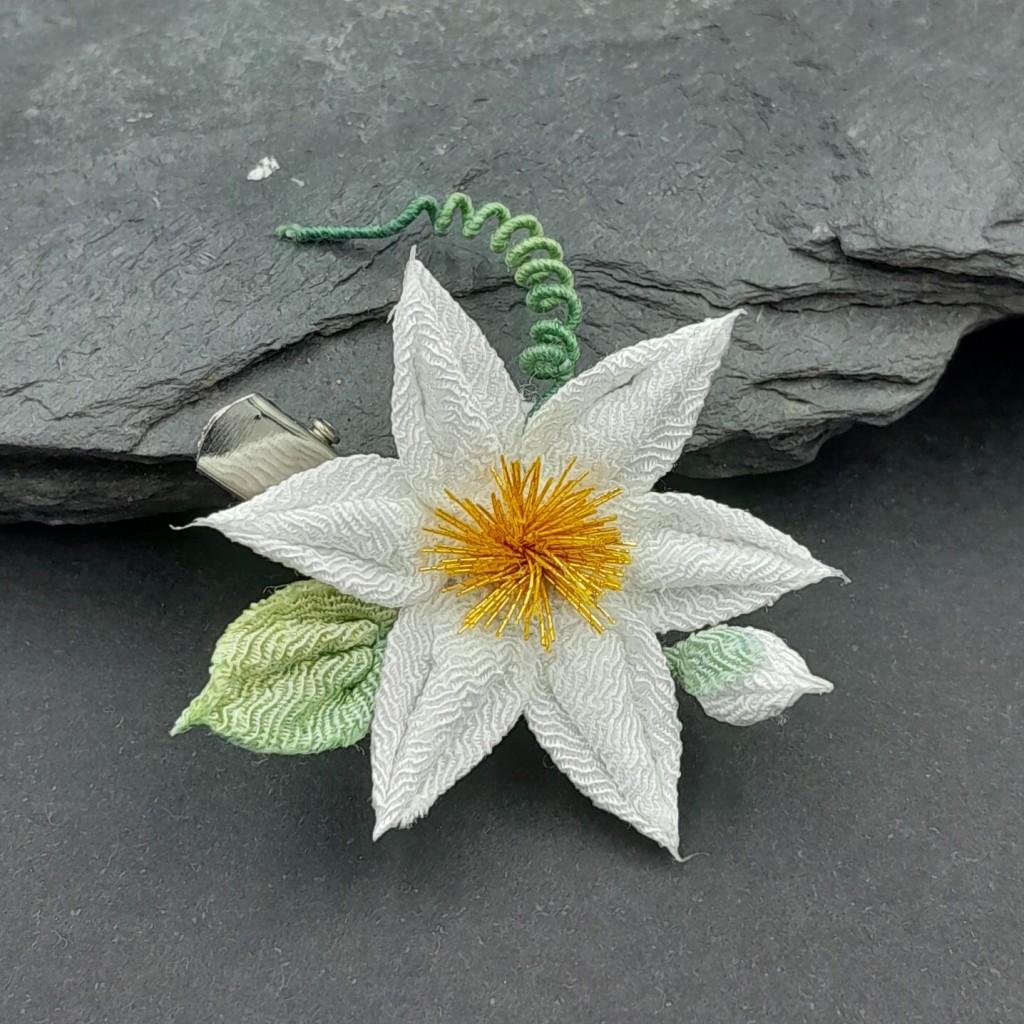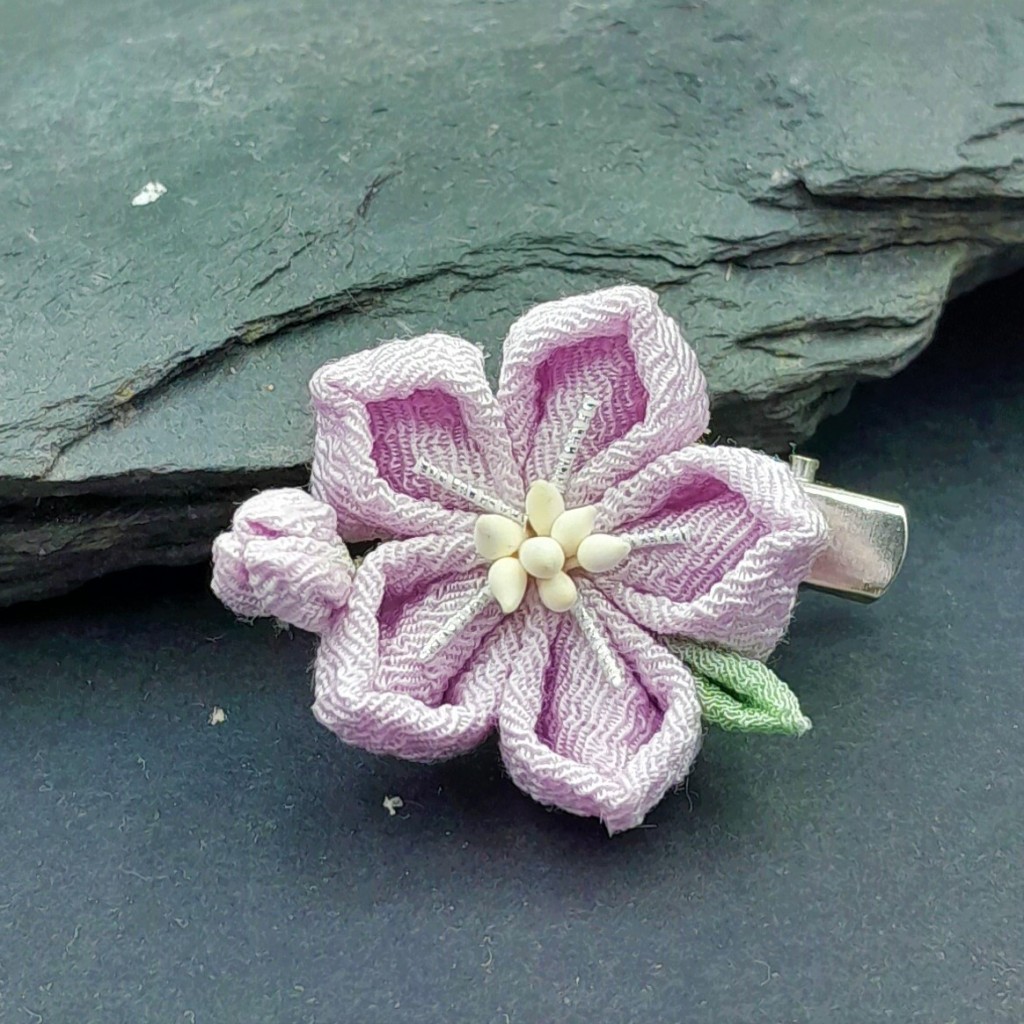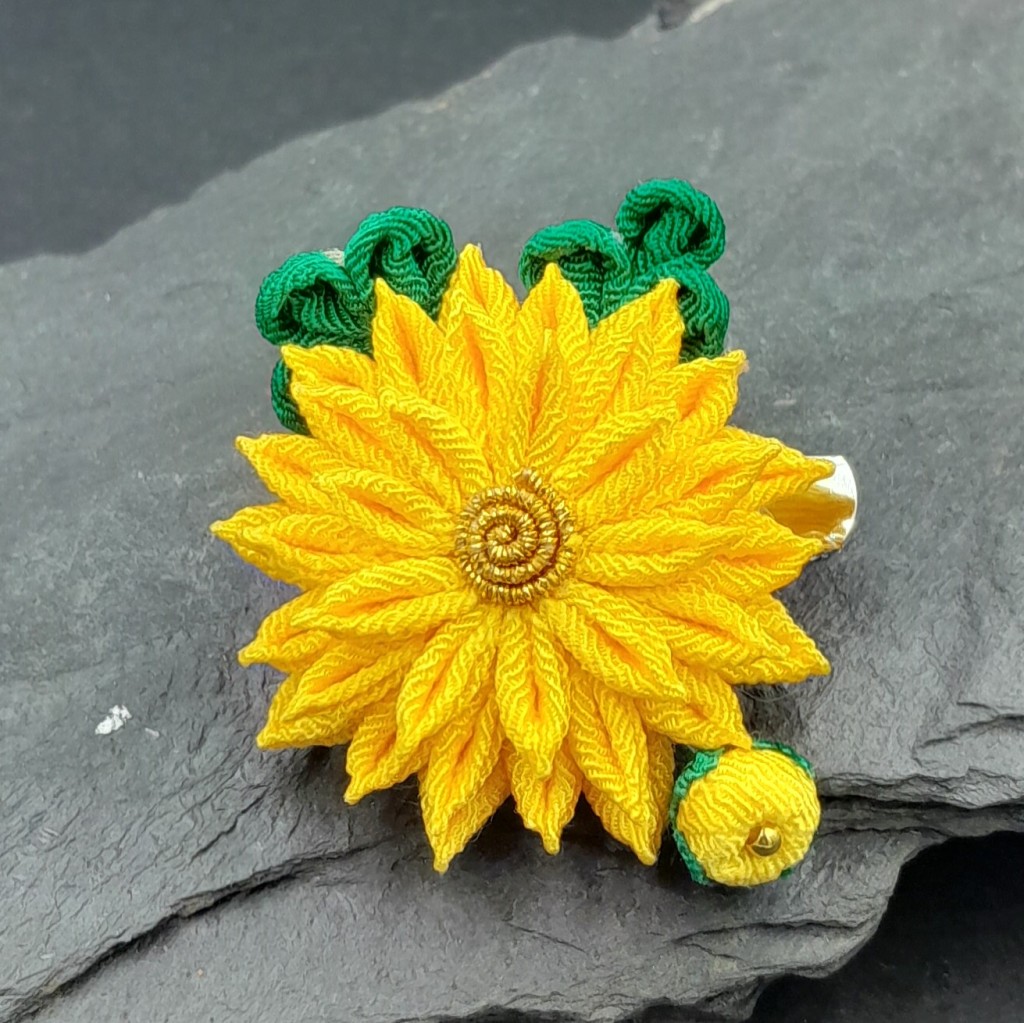This
The 12-month set is finally complete! It took me a while to decide on the motifs (my lack of decisiveness is probably my greatest flaw~!) and it took ages to make the whole set.
The whole project started out as a way to use some cute pre-cut chirimen I received as a gift last year. As I went along with the motifs, looking for ways to use it all up, I wanted to keep one of each motif for reference. As the collection grew, I ended up with ordering a special box, and making inserts.
The choice of motifs is a personal one, but I hope it makes sense ♡ Read all about he here:
January – Pine

It had been difficult to choose just one motif for January. January kanzashi change from year to year, rarely repeating. They have one thing in common, though; they are symbols which are supposed to bring good luck and prosperity. Amongst those are cranes, sparrows, fans, battledore and shochikubai, Three Friends of Winter, a combination of pine (longevity), plum (renewal and vitality) and bamboo (strength and prosperity).
For the 12 Monts hairpin set, I chose pine because, in Japan, pine is a highly symbolic tree. Pine trees stand for longevity and good fortune because it retains its leaves throughout the winter. Pine is also a potent symbol in Shinto, according to which branches of pine trees are used by kami to come to earth and interact with the mortal realm. In Noh theatre, pine trees as a way to depict the bond between kami and man.
February – Plum Blossom

Plum blossom is the queen of February kanzashi among maiko. They come in all shapes and sizes, from clusters of tiny blossoms worn by junior maikos to multi-layered single flowers on senior maiko. Plum blossoms bloom amid winter, and thus represent hope, courage, and vitality. They remind us that strength can bloom in adversity.
March – Daffodil

March in Japan sees the awakening of nature. We start to see colour in Maiko’s kanzashi. The most popular motif is canola flowers, nanohana, but there are also not less beautiful daffodils and narcissus. In Japan, they symbolise joy and mirth, and in hanakotoba (the language of the flowers), daffodils mean respect. So while the canola is a more popular motif, the yellow daffodil is a much more symbolic flower.
April – Cherry Blossom

Sakura, the cherry blossom, are a national symbol related to Japanese culture. Everyone can immediately recognise their distinctive heart-shaped petals. Books can be written about sakura and its contradictory symbolism. The delicate blossoms symbolise both life and death as the blooming of cherry blossoms hails the coming of spring, but at the same time, their short lifespan is a reminder that life is fleeting.
May – Iris

Irises in Japan are linked to samurai because of their long, slender sword-shaped leaves. Their bloom is said to mark the start of summer. Irises were traditionally believed to hold protective powers and fend off evil spirits and were put in the baths of boys on Boy’s Day. Purple iris specifically communicates knowledge and dignity and we can all agree that it’s a perfect choice for May.
June – Hydrangea

Nothing says “June” in Japan like hydrangea. June starts the rain season, traditionally called minazuki, “the month of water”, or “tsuyu or “plum rain,”.
Hydrangea kanzashi are usually in cool shades of blue, purple and pink and their shiny silver centres make us feel the coolness of the rainy season and sparkling droplets of water on fresh green leaves.
July – Clematis

June is traditionally the month of celebrations, so motifs on kanzashi are usually associated with festivals. Fireworks, fans and dragonflies in pastels and silver come in all shapes and sizes. One of the rare exeptions is clematis. Maiko wear them in June and July. They are usually in pastel shades of purple, blue or pink, occasionally white, so colours which evoke the feeling of coolness. I decided to make clematis a July motif for this set because it doesn’t get the attention it deserves, and in white as this is the colour I’ve seen most often.
August – Morning Glory

The morning glory is a symbol of summer. Asagao, as it is called in Japanese, is a popular summer motif on summer kimono, yukata and accessories, like fans. The flower has its’ own festival, the Morning Glory Festival of Iriya. Held each year from 6 to 8 July is one of the most popular events of the summer. They come in shakes of pink, purple and blue, but in my opinion blue is the most iconic of all.
September – Chinese Bellflower

A star-shaped blossom, the bellflower is the symbol of perfection. The five points of the five petals symbolize the five elements of the Tao – wood, water, fire, earth, and air. Beautiful as both single flowers and bouquets of tiny blossoms, it is often pictured with flowering clover and autumn grasses.
October – Chrysanthemum

The chrysanthemum represents longevity, rejuvenation and nobility in Japan, and it’s no wonder the Emperor chose it as his personal symbol. It is also the harbinger of autumn, harvest and goodwill. Because of its auspicious meaning, the chrysanthemum frequently appears on porcelain and kimonos. It is also featured on Japan’s 50 yen coin.
November – Mampe Leaf

Maple leaves are by far my favourite. Less popular than sakura or even chrysanthemums, the maple leaf is a beautiful farewell to fall. The Japanese maple tree is a significant tree and means calm, endurance and peace. Many people in Japan also enjoy the autumn version of hanami, called momijigari.
December – Tsubaki

The most popular kanzashi motif for December are lucky symbols, like gold coins, bamboo, pine, maneki neko (the lucky cat), dice and more. Camellia as a December motif is not really traditional, as maiko wear them in February or sometime in March. I love camellias too much not to include one and took an artistic liberty. Camellias are called the Roses of Winter, and particularly hardy varieties can decorate even frosty gardens. The flowering period extends from September to May, so it may be a stretch, but it’s such an elegant flower I could not resist.